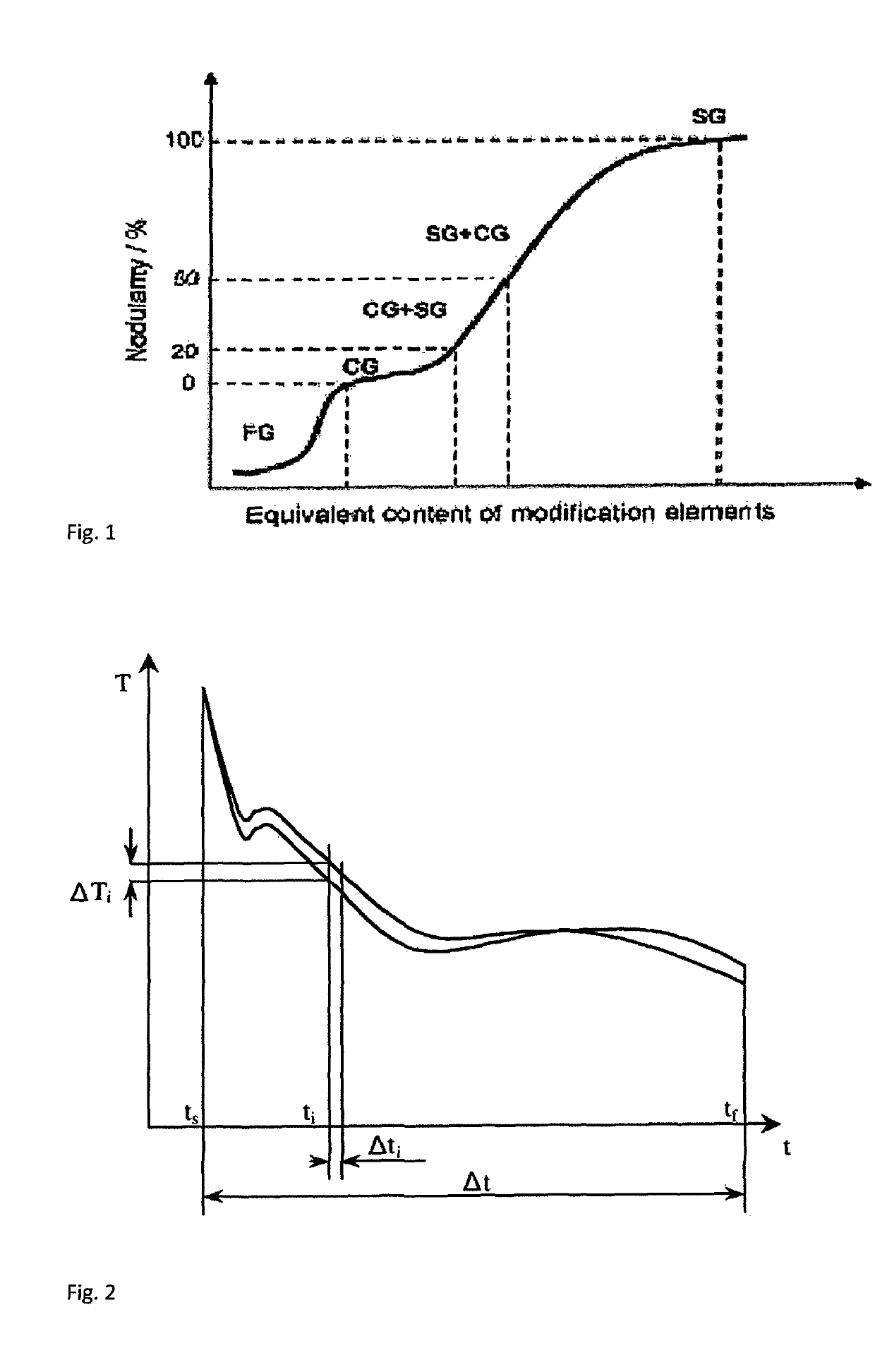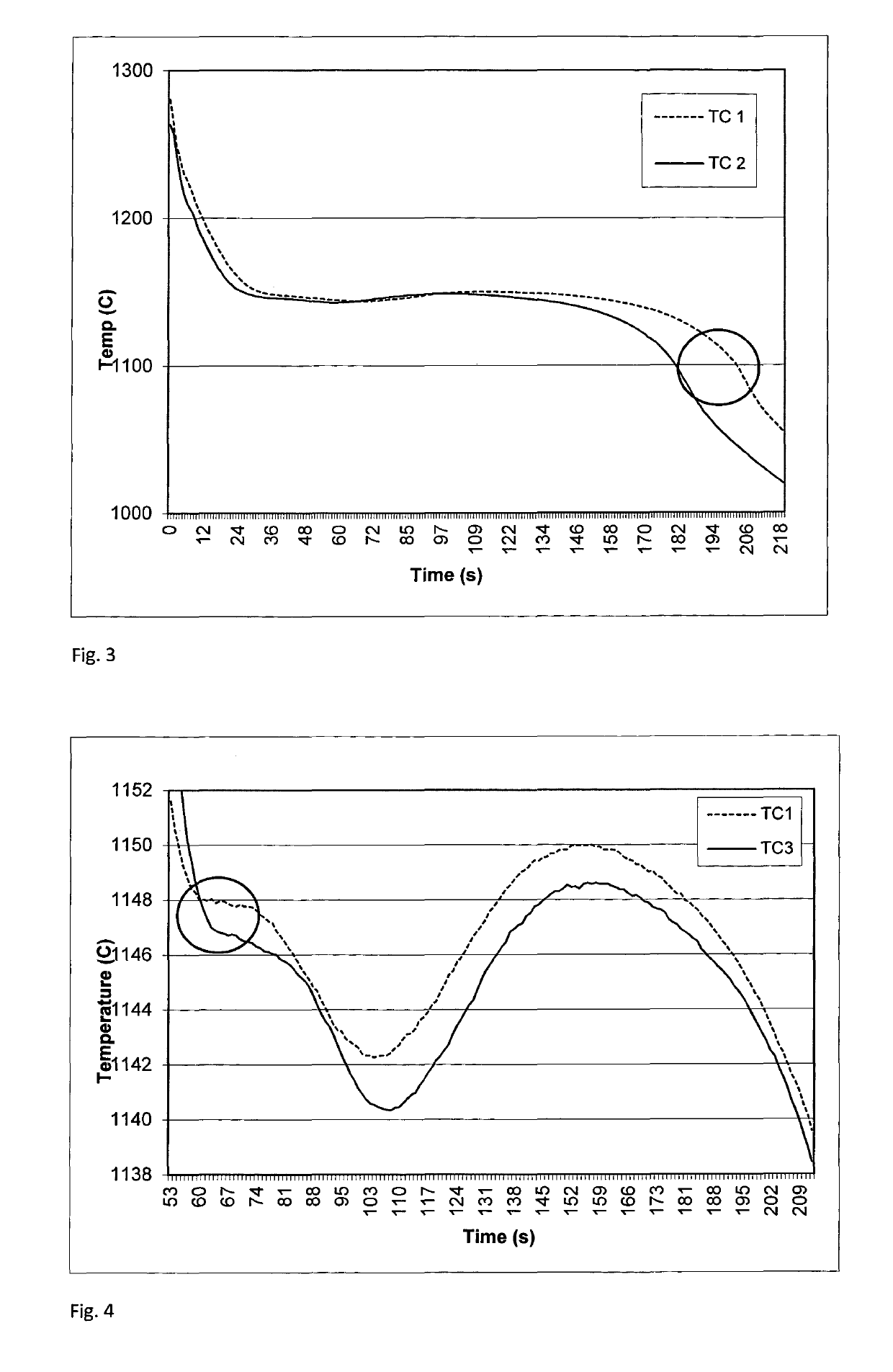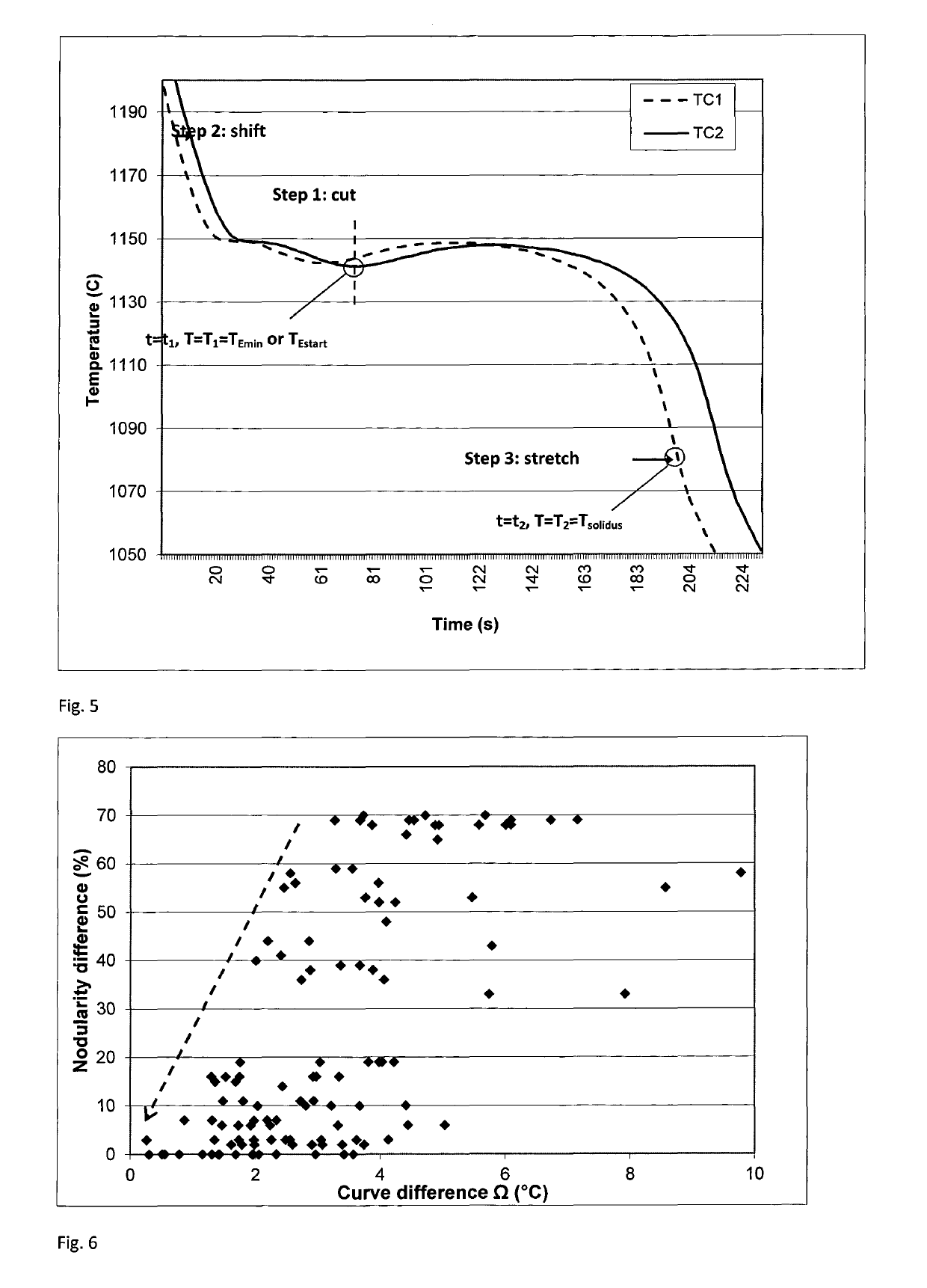Method of analyzing an iron melt
a technology of iron melt and analysis method, which is applied in the field of analysis of iron melt, can solve the problems of not easy control or monitoring of oxygen content, nodular graphite formation at lower residual magnesium in the treated iron, and certain degree of uncertainty of how much magnesium that will be required, so as to achieve easy detection, less importance to prediction, and easy detection
- Summary
- Abstract
- Description
- Claims
- Application Information
AI Technical Summary
Benefits of technology
Problems solved by technology
Method used
Image
Examples
examples
[0060]Melts with the compositions according to table 1 (in mass %) were prepared in an induction furnace of medium frequency type with a melting capacity of 4 ton. The melts were inoculated with 0.1% Inobar and 0.02% RE (rare earth). The composition of the respective melt was measured by means of a spectrometer. Cekv is the carbon equivalent of the respective melt, expressed as CE=% C+% Si / 4+% P / 2.
[0061]
TABLE 1Trial No.CSiMnPSCrNiMoCuSnTiMgCekv13.672.200.380.0050.0090.030.020.010.960.0590.020.0094.2223.602.280.360.0060.0100.030.020.010.910.0560.0220.0104.3733.612.220.360.0050.0080.030.020.010.920.0610.0220.0084.1743.722.220.400.0050.0110.030.020.010.960.0590.020.0104.2753.692.250.350.0050.0110.030.020.010.940.0620.020.0094.1563.622.230.380.0060.0100.040.020.010.940.0590.020.0094.1873.692.230.370.0060.0090.030.020.010.960.0610.020.0124.2583.652.280.380.0060.0100.040.020.010.930.0600.0230.0124.2193.682.260.380.0060.0100.040.020.010.930.0600.0220.0124.21113.712.020.380.0070.0110.040.02...
PUM
| Property | Measurement | Unit |
|---|---|---|
| thickness | aaaaa | aaaaa |
| temperature | aaaaa | aaaaa |
| time | aaaaa | aaaaa |
Abstract
Description
Claims
Application Information
 Login to View More
Login to View More - R&D
- Intellectual Property
- Life Sciences
- Materials
- Tech Scout
- Unparalleled Data Quality
- Higher Quality Content
- 60% Fewer Hallucinations
Browse by: Latest US Patents, China's latest patents, Technical Efficacy Thesaurus, Application Domain, Technology Topic, Popular Technical Reports.
© 2025 PatSnap. All rights reserved.Legal|Privacy policy|Modern Slavery Act Transparency Statement|Sitemap|About US| Contact US: help@patsnap.com



